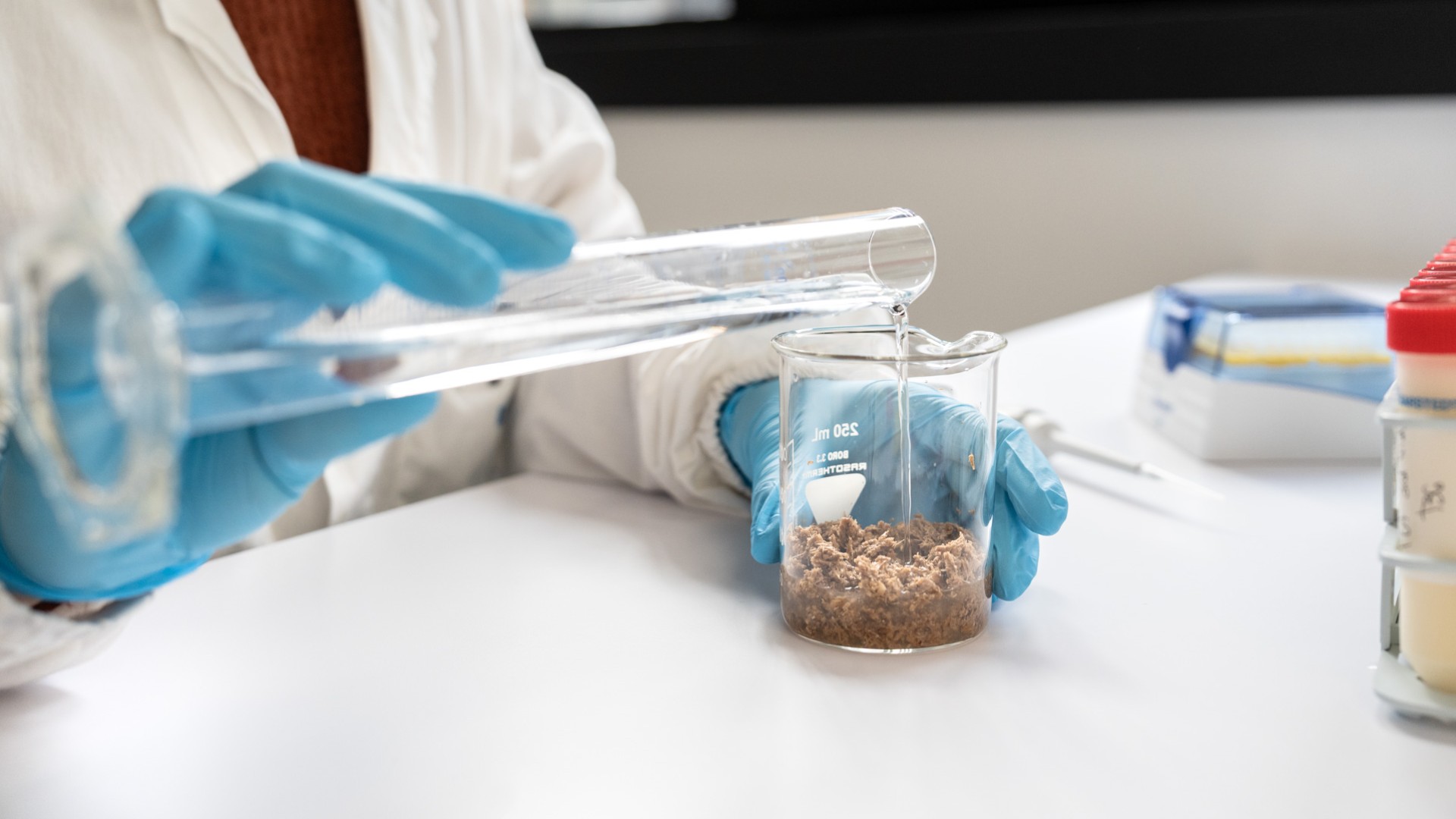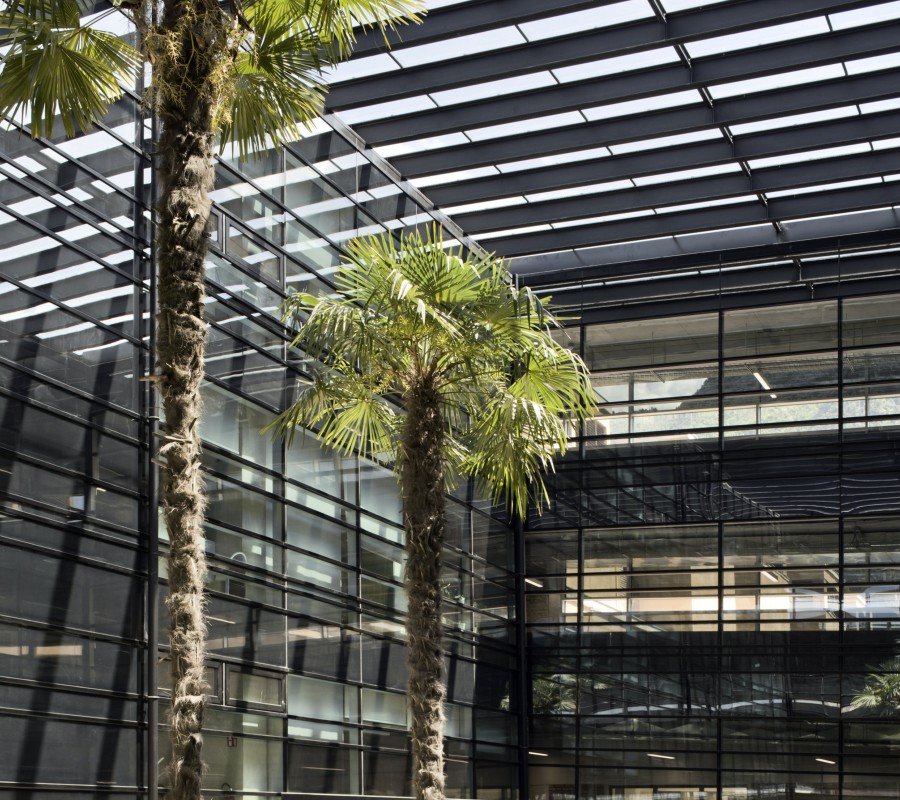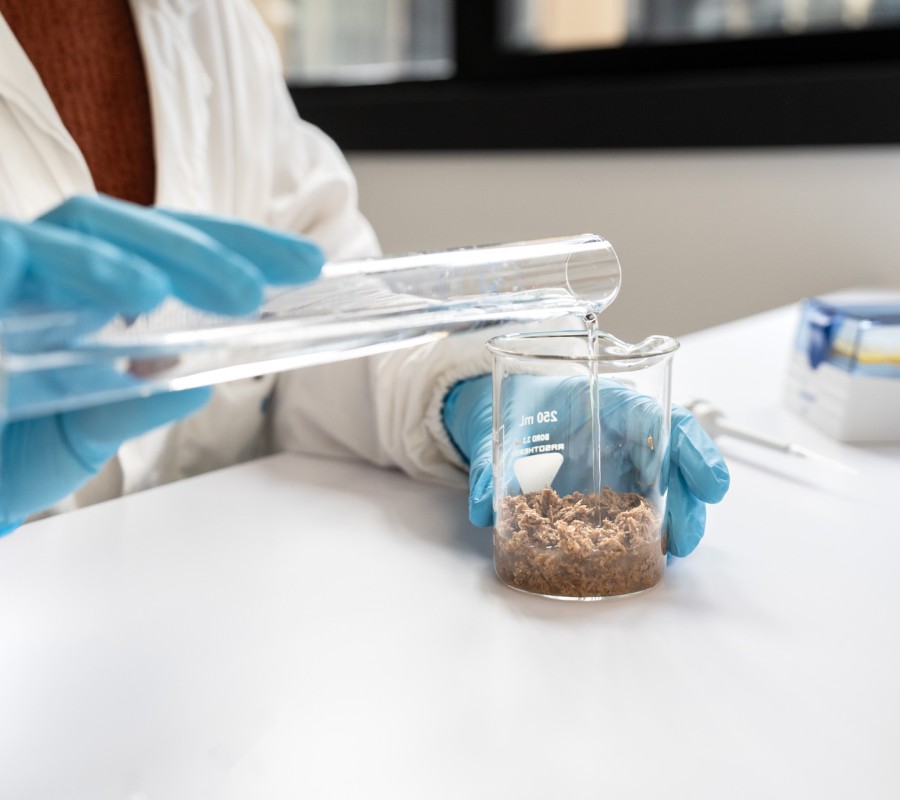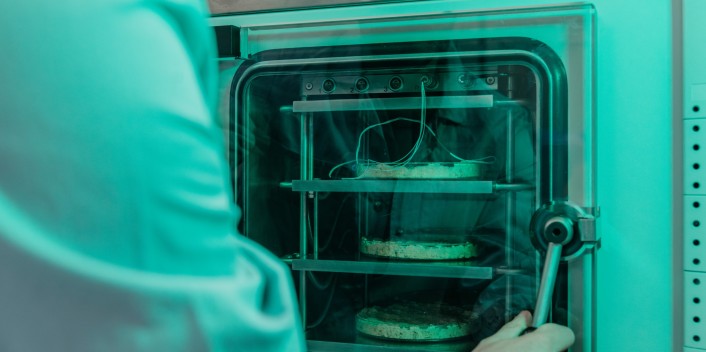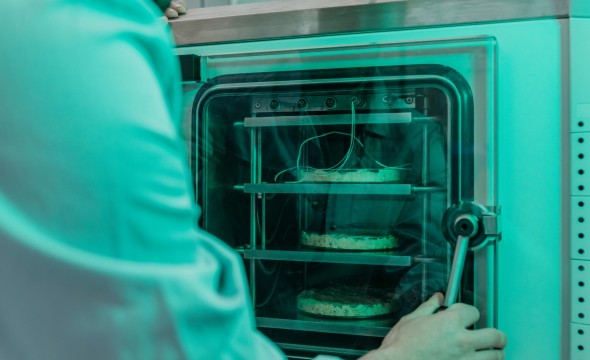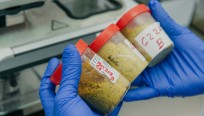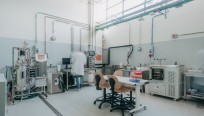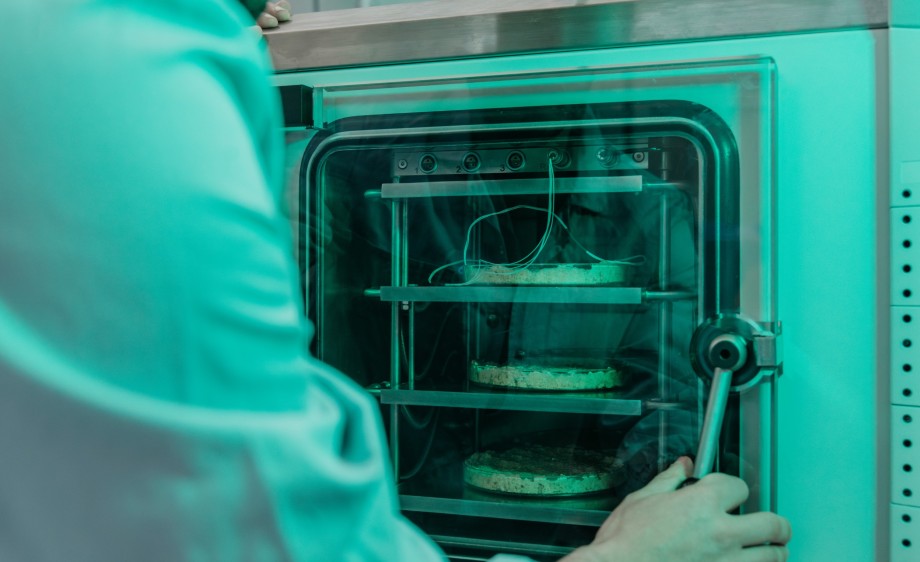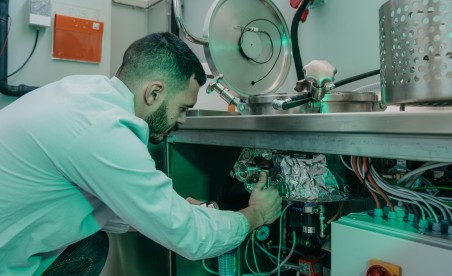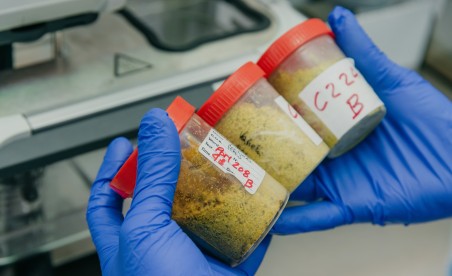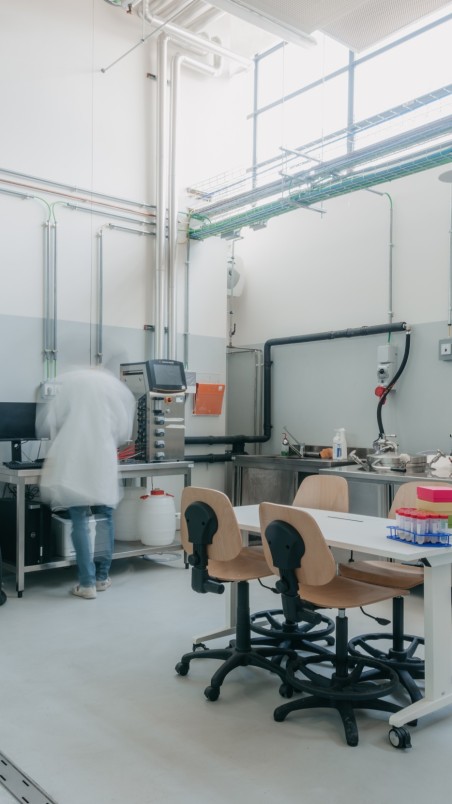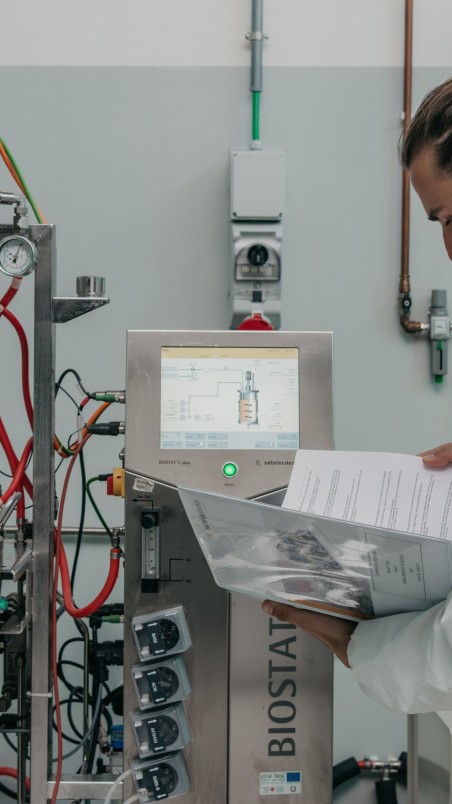Everything you need to know as a company
We improve the properties of food.
Nutritional value, production and ingredients: processes and technologies create innovative food.
Our focus: using innovative technologies to research extraction processes. With techniques based on supercritical fluids, we extract compounds with a high nutritional value from production waste and convert these into new products and nanomaterials. We use homogenisation, pasteurisation, extrusion and drying technologies to develop new ingredients and formulations. Stability and shelf life are key.
With carbon dioxide in a supercritical state, extraction is possible without a solvent.
The researchers use the properties of supercritical carbon dioxide to extract high-value-added natural compounds without solvents. This technology is used to
• extract essential oils from seeds and fruit peels
• extract bioactive, nutraceutical and antioxidant substances from industrial waste
• remove pesticides, contaminants and undesirable substances (caffeine, cholesterol) from food.
Our pilot studies prove: freeze-drying and powder form can improve ingredients.
The laboratory also focuses on pilot studies to optimise ingredient production. For example, freeze-drying can be used to gently remove water from products. By adding antioxidant or antimicrobial compounds, our research team 'functionalises' food. Moreover, the researchers produce products in powder form with high nutritional content, long shelf life and stability, which can be easily rehydrated.
Testing extrusion techniques: how innovative product shapes are created.
We are studying extrusion techniques in pilot studies. With the aim of designing innovative products. For example, the nutritional profile of a recipe can be improved by adding functional ingredients, such as flour enriched with proteins, dietary fibres and starch. High-pressure homogenisation (up to 20 MPa) is used to produce extremely stable nanoemulsions: oil-in-water emulsions or water-in-oil emulsions. A new opportunity: we can add nutraceutical, antioxidant or naturally antimicrobial compounds or flavours to foods and beverages where they are not naturally present.
Nanotechnology in agriculture: developing ingredients with new properties.
Exciting things are happening in research into nanotechnologies for the development of new products in the agricultural and food sectors. In this laboratory, nanomaterials with certain chemical/physical properties are being developed, which, for example, bring about greater chemical/biological reactivity in the production, processing and preservation of foods, as well as in the production of additives and ingredients, and enable the development of innovative food contact materials.


